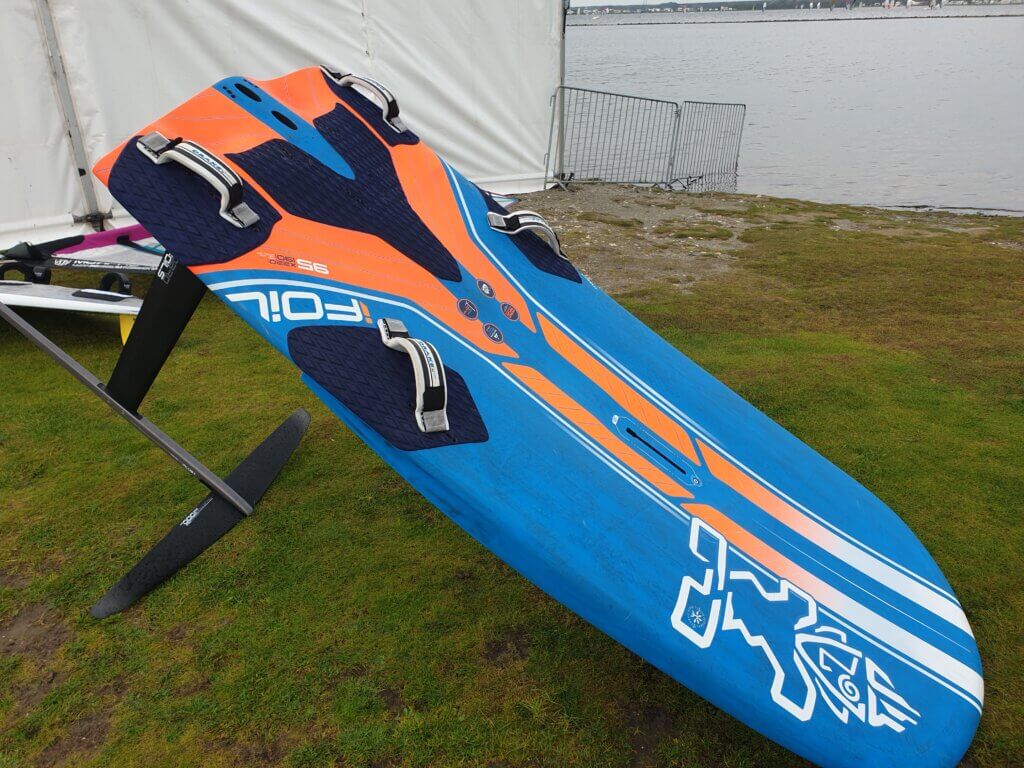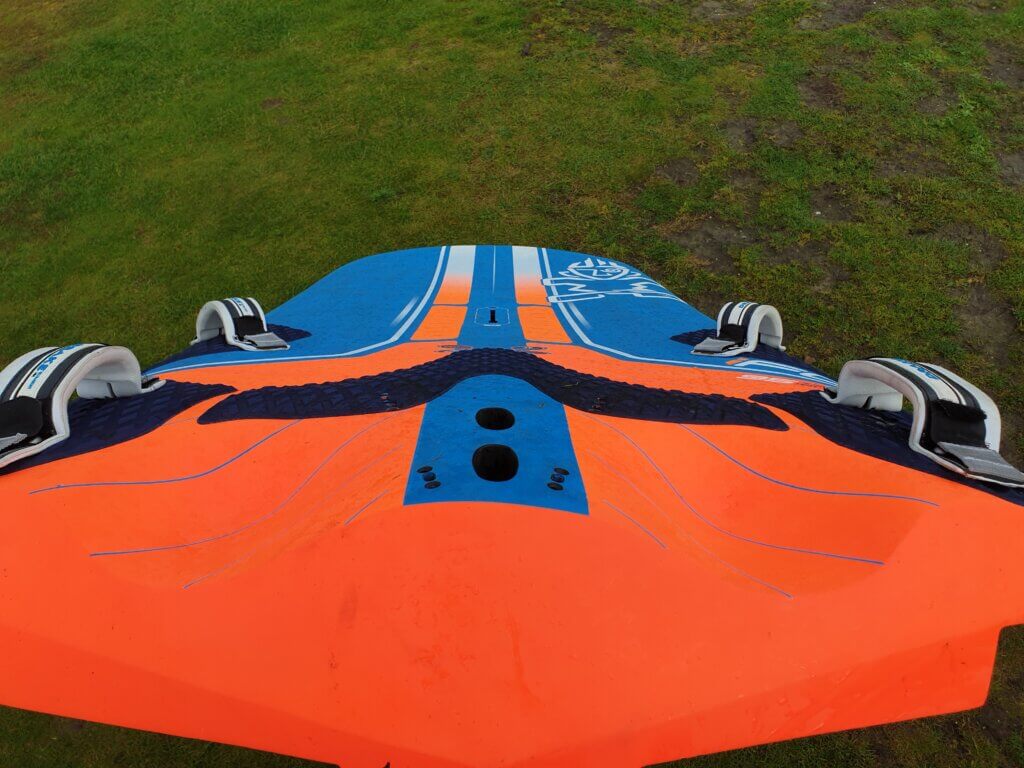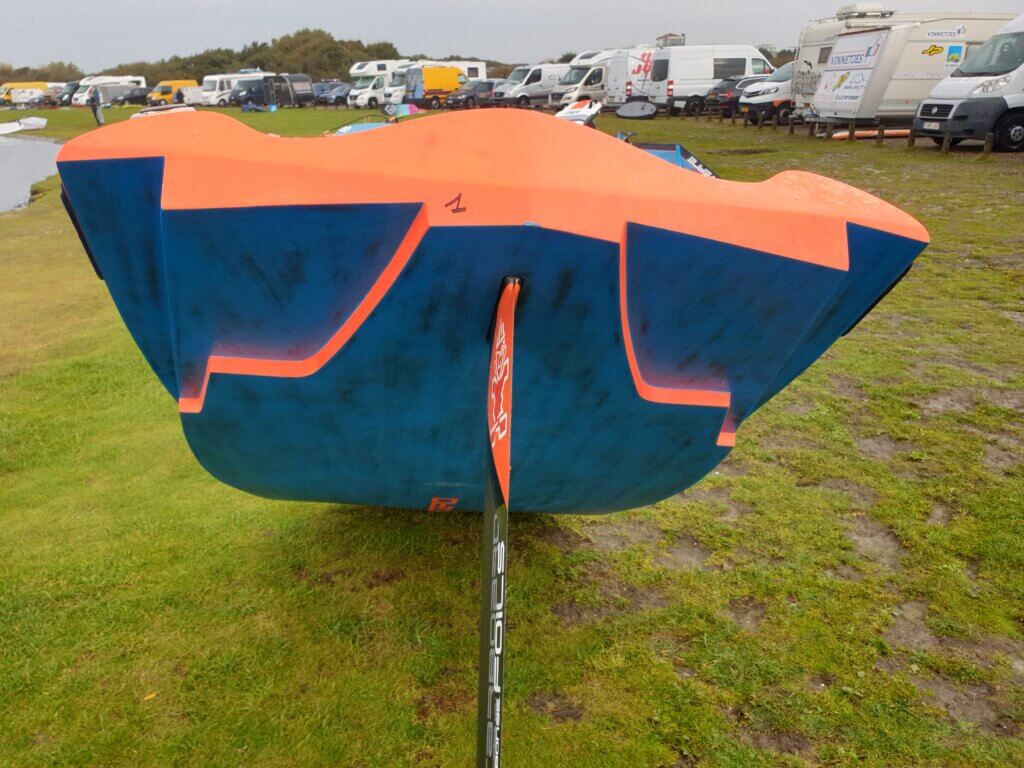Length 220 | Width 95 cm | Weight 11,25 kg | Volume 196 | Material: Carbon Reflex | MSRP € 2,899,-
IQfoil 95, more race oriented
The new IQFOiL 95 board is finally in after months of waiting. It is noticeable that there is a difference between the new Olympic board and the Starboard Foil 177 of 2019. With the new cut outs at the bottom and the extra 2.5 cm on both sides of the board, the design has changed quite a bit. The board has also received considerably more volume, a whopping 196 litres.
What really stands out is that the new board is much more focused on racing and you feel that. It’s all just a little bit heavier and he really only wants to go one way. This means that every move you made on the 177 board before with a very light tap, must now be done with a little more force. This took some getting used to but after a session you really got it and it sails fantastically with much more control.
If you want to get the most out of the new IQFOiL board, it is advisable to use the Starboard Foil with the 115cm plus+ Fuselage, which you notice when you don’t put it under it, but the regular fuselage 115cm. You notice that the board comes out of the water more difficult and the foot control is very heavy and slow without the plus fuselage. This is because the new plus fuselage has its front wing almost 7 cm further forward, giving you much more lift. The board needs this as it is about 1.5 kg heavier than the Foil 177.
What is striking is that the VMG (explains below what VMG is) of the board has a sharper angle than that of the 177 and certainly in combination with the official IQfoil set (900cm2 frontwing and 115 cm plus fuselage) the difference is clearly noticeable.
Due to the almost 200 litres that are in the board, the board is extremely stable and in good conditions to winfdoil from 5 knots, making it one of the fastest flying boards on the market. The Plus fuselage also plays a big role with the adjustable back wing. This can be put up to a position of +1 which ensures that the foil extremes get a lot of lift, this position is not fast and I recommend only for the lightest conditions.
We are still fine tuning the tuning of the board in the talent team. But with what we know now, the ideal position under most conditions is between -1 and 0 degrees.



Conclusion
Overall I wouldn’t recommend this IQFOiL set for the recreational windfoiler, if you really want to race then this is a really good set that I can recommend. Always buy this board in combination with the Starboard Race foil plus or Starboard IQfoil to get the most out of this board!
Velocity made good explained!
Luc Schmitz, our team rider, explains below what VMC is and why this is important for a competition foiler. VMG, is a term used in sailing and windsurfing, especially in competitions, which indicates the speed of a sailboat in the direction of the wind.
Every windsurfer knows it, you go as high as possible to the wind and you lose a lot of speed or we sail a bit lower but you go a lot faster. VMG is a tool for choosing between ‘high’ or ‘fast’. It’s basically the same as being in a traffic jam. Are you going to stay in this traffic jam, or are you going to take the next exit that costs more kilometers but goes faster? It’s a tough choice, and a mathematical formula has been devised for that. The formula calculates the true distance to the buoy. Online you will find plenty of these types of VMG calculators.
Calculate VMG
There are two types of VMGs. VMG to the wind gives an indication of your fastest course to the wind. VMG to the buoy does this, as the name betrays, towards the buoy. Imagine sailing 26 degrees to the wind. Your speed is 20 kts (knots). The VMG formula calculates that your VMG is 5. You fall to 30 degrees in the wind and your speed is 25 kts, is that advantageous? You make more miles, but also more speed. If your VMG rises to, for example, 5.4, then that is a good move and you are almost 10% faster at the top buoy. If your VMG drops, it will take longer to get to the top buoy and the competition will pass you by.
VMG helps you determine which course your windsurfboard, windfoilboard or sailboat will take fastest under the existing conditions to point X (wind/buoy/waypoint). An interesting factor to weigh in. The new IQfoilboard therefore has a higher VMG on average, so on average you are faster at the top buoy on this board compared to the old racing foil board.


